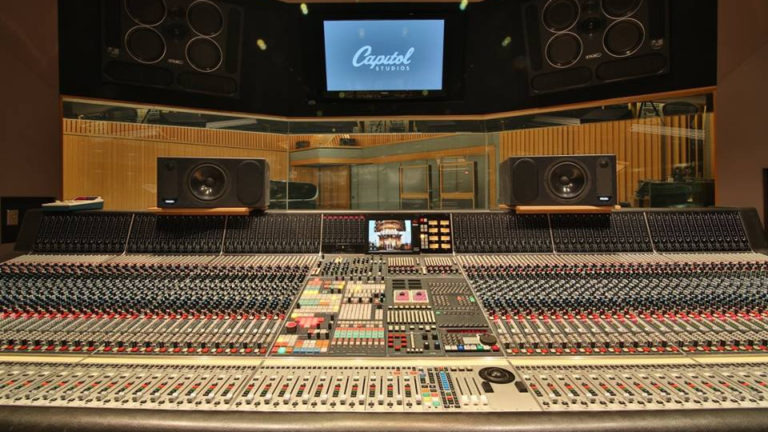
An unhappy group of members splintered off and formed their own union. Things didn’t quite go according to plan for the union and its leader, Caesar Petrillo. The American Federation of Musicians launched a strike against the major Hollywood studios on February 20, 1958. But the theory has also been floated, and I can’t remember where I first read it, was that the canned music was necessitated by a musicians strike. Goldmark speculated in his dissertation that a possible reason behind using the stock music was an experiment to save money Carl Stalling retired from the studio just before the Capitol library found its way into Warners cartoons. Seely got the screen credit on the cartoons solely because he was the boss at Capitol.ĭr. Cues from the Capitol library were cherry-picked, quite possibly by Treg Brown at Warners, and edited together to form a score.
Capitol hi q production music library tv#
It proved to be very popular it provided background music for Hanna-Barbera cartoons, Gumby stop-motion shorts, industrial films from numerous companies (including Jerry Fairbanks Productions) and theme songs for several TV shows. In 1956, Capitol created a library of several hundred records (or film reels) of music that could be licensed for films or television shows. At the time, Seely was in charge of Capitol’s film music library. Seely was a musician and composer, but he didn’t compose the scores for the six shorts. Six cartoons released by Warners in 1958 bear a music credit for John Seely.

Also missing is a list of cues I’ve been trying to find out about for several decades-what the internet has dubbed “The Seely Six.” Goldmark’s dissertation expounds on Stalling’s use of popular and classical music, so most of his cue transcriptions are missing just about anything Stalling (and his successors and predecessors) composed for each cartoon. The cue sheet reveals the melody behind Bugs and then Yosemite Sam dancing is a Carl Stalling original.ĭr. Here’s the list of cues for one of Friz Freleng’s funniest cartoons, Bugs Bunny Rides Again (1948). In his doctoral dissertation at UCLA in 2001, Daniel Goldmark, perhaps the foremost expert on music in theatrical animated cartoons, transcribed portions of the cue sheets for almost every Warners short, beginning with the first Looney Tune, Sinkin’ in the Bathtub (1930). My favourite cartoons were made by Warner Bros. Jerry Beck, as you might expect, has a random collection on his Cartoon Research web site.

A cue sheet is still required for every production, film or television.īelow you see a sheet from the first Huckleberry Hound Show, though this sheet was revised in June 1960 for some reason. In the sound era, cue sheets were logs containing names of songs, publishers and other pertinent information, and sent to music licensing organisations to ensure composers got paid for their work. Music publishers would send out cue sheets to theatres in the hope the music cues on it would be played-cues that, oddly enough, were exclusive to the publisher supplying the sheet. Cue sheets have been around since before sound films, but they originally served a different purpose.

The definitive answer to “what is that music” is found in something that, regrettably for cartoon fans, is not available on the internet. cartoon? Or “Shuffle Off to Buffalo”? (Performed by a Jewish baby, in one short). How else would anyone born in the 1950s or 1980s know “Blues in the Night” unless they heard it in the soundtrack of a Warner Bros. My father had a large collection of classical music and listened to a classical radio station, so I’m not one of those people who say “I learned about classical music/opera watching cartoons.” But cartoons exposed me, and several generations, to popular songs of another era. In some cases, the answer is easy if someone has knowledge of classical music. And music is behind one of the questions asked by animation fans on occasion: “What is that music in the background?” Music was the driving force in the early sound cartoons think of the Silly Symphonies, the original Merrie Melodies and Mickey Mouse bashing out tunes on a variety of animals-turned-instruments.


 0 kommentar(er)
0 kommentar(er)
